A dehumidifier is an essential appliance for maintaining comfort and preventing issues like mold growth in humid environments. However, like any appliance, it can sometimes run into problems that prevent it from functioning optimally. One common issue users encounter is the dehumidifier not collecting water, which can leave you wondering what went wrong and how to fix it.
This blog post will guide you through the potential reasons why your dehumidifier might not be collecting water, from simple user errors to mechanical malfunctions. We’ll cover topics such as ensuring proper setup, checking for environmental factors, identifying clogged or faulty components, and knowing when professional help may be necessary. By the end of this guide, you’ll have a clear understanding of how to troubleshoot and resolve this issue, ensuring your dehumidifier works effectively to keep your space comfortable and dry.
Why is my dehumidifier not removing moisture from the air?
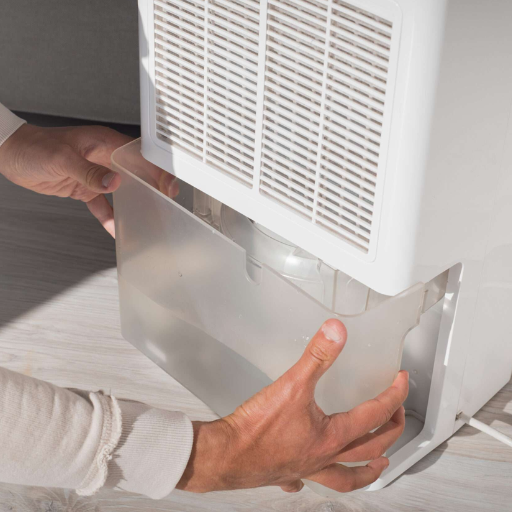
There are several reasons why your dehumidifier may not be removing moisture from the air. First, check if the air filter is clogged, as this can restrict airflow and reduce efficiency. Ensure the humidity settings are appropriately adjusted; the target level should be lower than the current room humidity. The unit may also struggle in conditions outside its operating temperature range, typically below 41°F or above 95°F. Another possibility is that the coils are dirty or frozen, preventing proper operation. If none of these factors seem to be the issue, the compressor or refrigerant levels might be faulty, which would require professional attention. Regular maintenance and proper setup are key to ensuring optimal performance.
Understanding humidity levels and dehumidifier settings
To effectively manage indoor humidity with a dehumidifier, it’s important to understand ideal humidity ranges and proper device settings. The optimal indoor relative humidity level is typically between 30% and 50%. Levels below 30% can lead to dry air, causing discomfort and potential damage to wooden furniture, while levels above 50% may encourage mold growth, dust mites, and other allergens.
Most dehumidifiers allow you to set a target humidity range using a built-in humidistat. For general use, aim for a setting of 35% to 50% for optimal comfort and air quality. In damp spaces such as basements, consider lowering the setting to around 30% to effectively combat excess moisture. Regularly monitor your dehumidifier and clean the filters to ensure proper operation. Additionally, make sure doors and windows are closed in the space you’re dehumidifying, as open areas can hinder its efficiency.
Checking room temperature and its impact on dehumidifier performance
The temperature in the room is critical for the proper functioning of the dehumidifier. The majority of dehumidifiers work within an optimal temperature range of 18° to 30°C. If the temperature drops below this range or if the environment is particularly cold, the coils inside the dehumidifier can freeze. This will lead to reductions in the dehumidifiers efficiency, and in extreme cases may cause damage. If you need to dehumidify space that experiences lower temperatures, such as basements or garages, look for low temperature dehumidifiers which are often fitted with automatic defrost features.
In conjunction with increases in temperature and humidity, dehumidifiers tend to require more energy to extract moisture which might lead to increased wear on the system. To achieve the best results, the conditions of the room should be taken into account, and the dehumidifiers capacity matched to the size of the room. Insure that the dehumidifier monitor the temperature and location where it is operating in order to take the necessary adjustments that will enhance the durability and effectiveness of the device.
Examining the dehumidifier’s coil and refrigerant system
To determine if the coil and refrigerant system are functioning correctly, I would first inspect the coils for any visible debris, dirt, or frost buildup that might hinder performance. Keeping the coils clean is critical for optimal heat transfer and efficiency. Next, I would check for any signs of refrigerant leaks, such as oil stains or reduced cooling capacity. If I suspect a leak, I would rely on a qualified technician to handle repairs, as refrigerant handling requires expertise. Additionally, ensuring proper airflow around the coils is vital, so I’d make sure the air filters are clean and not obstructed. Taking these steps regularly helps maintain the efficiency and longevity of the dehumidifier’s system.
How do I diagnose a dehumidifier that’s not collecting water?
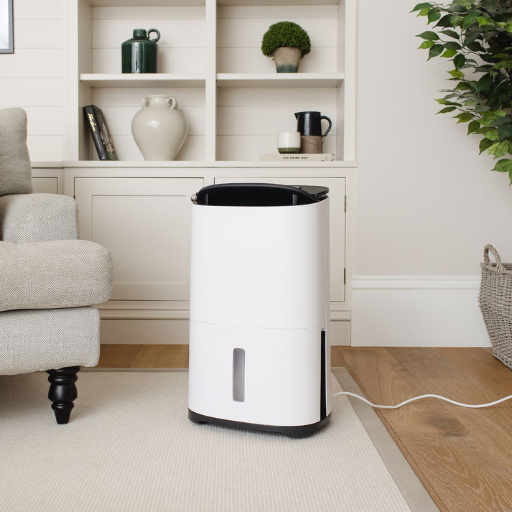
When diagnosing the issue of a dehumidifier that is not collecting water, the first thing that needs to be done is to check if the unit has power, if it is set ot the correct humidity level and if the room temperature is above 65 degrees F. Most units do not work well in cold conditions. Ckeck that the air filter is not clogged. Check that the collection bucket is properly seated and not full. If it is full, the unit will automatically turn off until the container is emptied. Water collection issues require checking the coils for frost, which points to possible refrigerant or airflow problems. Otherwise, enlisting an expert would be the most logical course of action.
Inspecting the bucket and water collection system
To make sure that your dehumidifier performs well, first examine the collection bucket. Ensure that the bucket is not full because this will activate the automatic shutoff feature. Check the bucket’s seating position to make sure it is correctly positioned. If the bucket is not aligned, no water will be collected. Make it a point to clean the bucket regularly so that the accumulation of dirt and mold do not interfere with the performance of the dehumidifier. For the dehumidifiers that come with a continuous drainage hose, check the hose for clogs, kinks, and proper connections. These simple preventive maintenance practices will remove many common problems regarding water collection.
Checking for clogs in the hose or drainage system
To check for clogs that may be occurring in the hose or drainage system, first disconnect the hose and check for any obstructions such as blocks, debris, mold, or hardened buildup, accurately known as a blockage. Clogs can be done by brushing out the hose with a long brush or through the simple of method of running clean water. Clear Clogs. Following this, look at the other part of the dehumidifier drain, the outlet drain, remove any muck or filth that may be stuck at the base. If clogs are still present, clean the outlet using a rag or small brush. Check if the pump is operational through the test when attached to systems that come with a pump, along with checking that all the lines that are connected are open and unclogged.
Evaluating the compressor and fan motor functionality
To evaluate the compressor and fan motor functionality, I would first ensure the dehumidifier is powered on and set to the desired humidity level. Then, I’d listen for any unusual noises from the compressor, as grinding or rattling sounds can indicate a problem. For the fan motor, I’d check if the airflow feels consistent and strong; weak airflow might mean the motor needs attention. If either component seems faulty, I’d consult the user manual for troubleshooting steps or consider contacting a professional for repairs. Regular cleaning and avoiding overuse can also help maintain these crucial parts.
What are common causes of a dehumidifier not collecting water?
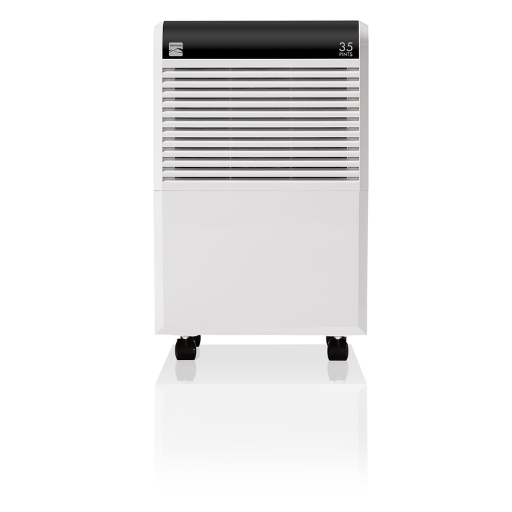
There are several common causes of a dehumidifier not collecting water. First, the room temperature may be too low, as most dehumidifiers function poorly in temperatures below 65°F. Second, the humidity level in the room might already be low, making the device unnecessary. A clogged air filter can also restrict airflow, reducing efficiency. Additionally, the water collection bucket might not be positioned correctly or could be full, prompting the machine to stop. Lastly, a faulty compressor, refrigerant leak, or other internal malfunction may prevent the dehumidifier from functioning properly, which may require professional servicing.
Faulty humidity sensor or electronic control board
If the control board or humidity sensor is malfunctioning, it could cause the dehumidifier to not turn on or overwork itself. The control board may have a wiring issue, a circuitry failure, or even suffer from a power spike that could hinder the capabilities of the control board. In the case of the sensor, it may have a fracture or become so miscalibrated that it cannot reliably measure the humidity present in air. Take a look for marks indicating damage or disconnections, and try resetting the sensor if it is indeed possible. If recalibration does not solve the issue, there may be a need to work on the control board or the sensor’s replacement but, for optimal testing and repair, a specialized technician should be called in.
Issues with the evaporator coil or refrigerant levels
Issues with the evaporator coil or refrigerant levels can cause significant problems with the efficiency and function of an HVAC system. If the evaporator coil is frozen or dirty, it can restrict airflow and prevent proper cooling. I would start by inspecting the coil for dirt, ice, or other blockages and ensure the system has been turned off long enough for any ice to thaw. For refrigerant issues, like leaks or low levels, it’s best to contact a licensed HVAC technician since handling refrigerants requires specialized tools and certifications.
Problems with the capacitor or overload protector
A malfunctioning capacitor or overload protector can lead to significant issues in an HVAC system. The capacitor is responsible for providing the electrical boost needed to start and run the system’s motor. If the capacitor is failing, symptoms may include the air conditioning unit not starting, random shutdowns, or irregular humming noises. On the other hand, the overload protector is a safety mechanism designed to shut off the motor if it overheats. If the overload protector is damaged, the motor may stop functioning entirely, and excessive overheating could result in further component damage.
Resolving these issues typically involves inspecting the components for visible signs of damage, such as burns or swelling on the capacitor or a malfunctioning overload protector. If problems are detected, these components will likely need to be replaced. Since handling electrical parts involves risks, contacting a professional HVAC technician is strongly advised to ensure proper diagnosis and safe repairs. Regular maintenance, including ensuring the system is not overloaded due to other malfunctioning parts, can help extend the lifespan of these critical components.
When should I call a technician for my dehumidifier?
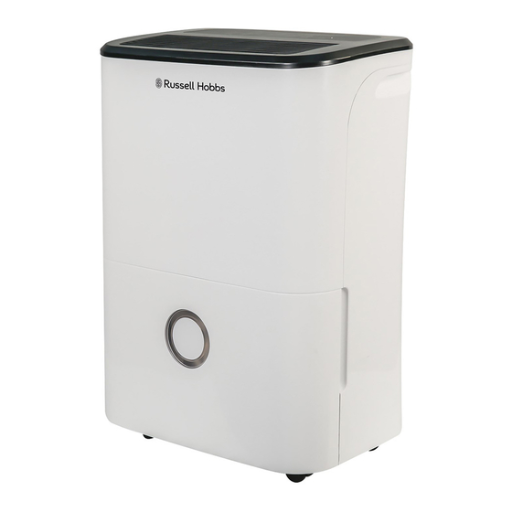
You should call a technician for your dehumidifier when it stops removing moisture effectively, displays error codes, emits unusual noises, or leaks water. Additionally, if you notice electrical issues, such as frequent tripping of the breaker, or if the unit fails to turn on despite troubleshooting, professional assistance is necessary. Technicians have the expertise to safely diagnose and repair complex issues, ensuring your dehumidifier operates efficiently.
Identifying signs of major appliance malfunction
Recognizing the signs of major appliance malfunction is crucial to preventing further damage and ensuring safety. Common signs include excessive noise during operation, failure to start or respond, frequent breakdowns, or inconsistent performance. For instance, refrigerators may stop cooling effectively, washing machines might leave clothes soggy, or ovens may fail to reach the desired temperature. Visible symptoms like water leaks, burning smells, or overheating are also clear indicators of trouble. If your appliance displays unusual behavior, acting quickly to troubleshoot or call a professional can save time, money, and possibly extend the lifespan of the unit.
Understanding warranty coverage and repair options
Understanding your warranty and repair options can be straightforward if you know what to look for. First, always review the terms of your appliance’s warranty to identify what is covered—most warranties protect against defects in materials and workmanship for a specified period. I check whether repairs are free during that time or if I need to pay for labor or replacement parts. Some warranties require using authorized technicians, so I confirm this before hiring anyone. Additionally, I research extended warranty options or home warranty plans, which can be a cost-effective way to cover unexpected repairs. When my appliance is out of warranty, I usually compare repair costs with replacement costs to decide the best course of action.
How can I maintain my dehumidifier to prevent future problems?
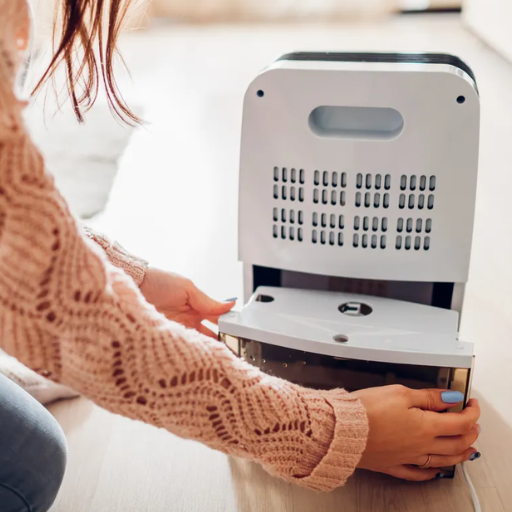
To maintain your dehumidifier and prevent future problems, start by cleaning the air filter regularly, as a clogged filter reduces efficiency. Empty the water reservoir frequently to avoid mold buildup, or ensure the drainage system is clear if using a continuous drain option. Periodically inspect and clean the coils to prevent dust from accumulating. Place the dehumidifier in a well-ventilated area and ensure proper spacing around it for optimal airflow. Finally, follow the manufacturer’s maintenance recommendations and schedule routine checkups if necessary to keep it functioning effectively.
Regular cleaning and maintenance tips
The following tips are vital in cleaning and maintenance of your dehumidifier to ensure optimal operational efficiency:
Wash the air filter: Air filters located on the axis of the air ducts ought to be removed once every two weeks to wash with warm water or to be vacuumed clean of high amounts of dust and dirt. It should be allowed to dry fully before replacing it.
Wash and empty the water container: To prevent stagnation of water and consequent microbial development, the container should be emptied regularly. In addition, the container also needs to be washed with soap in order to remove bad smells and stains on a regular basis.
Maintain and clean the coils: Coils of the dehumidifier need to be cleaned, as dust and dirt can make its performance to slow down noticeably. This is done by removing the coils and cleaning them with cleaning cloths, bristle brushes or coils. This should be performed bi-annual in the summer months to enhance the ease of access to the unit to ensure optimization and best possible unit performance.
Remove any barriers to free water mobility: Constantly check and inspect any dehumidifier hose that is used for constant over drainage to ensure that it does not get interrupted by any form of blockage. Barriers in place for the free flow of water will allow the Device handlers and Equipment Performers to block water leakages and other device failures.
Maintain the right position of the unit: The unit should preferably be on a horizontal and stiff part that is well ventilated and has no harsh weather and is well 6-12 inches wide from any object.
Utilize the guidances provided by the manufacturer: Go through the user’s instructions for model-specific detailing maintenance procedures. Additional manufacturer resources may include care guidelines and checklists, optimal tips, and critical care schedules.
Yearly dehumidifier maintenance should be done seasonally: Clean every part of the machine properly so that it is ready to be stored and dried completely. Basic inspection of all components should also be done to ensure the equipment is operational before starting any post-storage activities.
These instructions add significant value to the effectiveness of maintaining a healthy indoor environment while greatly improving the durability of the dehumidifier.
Proper usage and optimal settings for longevity
To ensure proper usage and extend the longevity of your dehumidifier, follow these concise guidelines:
- Set the ideal humidity level: Aim for a relative humidity between 30% and 50% for optimal comfort and to prevent mold growth. Many dehumidifiers have an adjustable humidistat—use it to maintain this range.
- Position the unit strategically: Place your dehumidifier in the room with the highest humidity or areas prone to dampness, such as basements or bathrooms. Ensure it is away from walls and furniture to allow unobstructed airflow.
- Clean and replace filters regularly: Check the air filters every 2-4 weeks. Clean or replace them as needed to maintain airflow efficiency and prevent dust buildup that can strain the unit.
- Empty the water tank frequently: For models without a continuous drainage system, empty the tank promptly when it’s full to avoid overflow. Using the auto shut-off feature can help prevent spillage.
- Use in moderation: Operating the dehumidifier for 12–16 hours per day is adequate in most situations. Overuse can wear out the components prematurely.
By following these best practices, you can optimize your dehumidifier’s efficiency and ensure a longer functional lifespan.
Is it time to replace my dehumidifier?
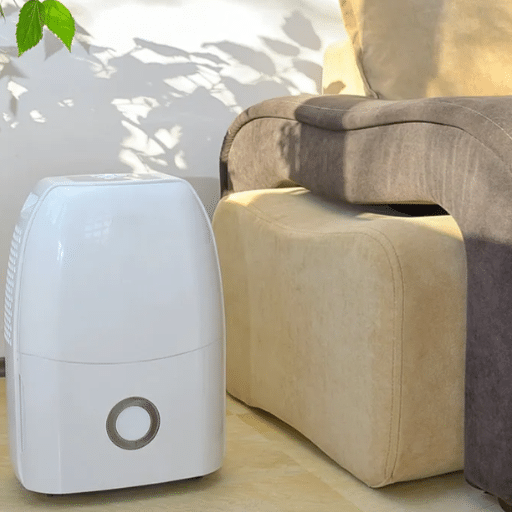
In this guide, we discuss the most crucial factors that could help you determine if it’s time to replace your dehumidifier:
Age of the unit: An average dehumidifier lasts about 5–10 years. It is pretty likely it is less efficient and breaks down frequently, if the unit is older than that.
Performance issues: A dehumidifying unit that fails to adequately remove humidity, operates loudly, or has stopped extracting water completely is likely failing.
Energy inefficiency: An older model or outdated unit makes greater energy expenditure inevitable.
Frequent repairs: If you find yourself frequently needing repairs and their costs are escalating, it may be best to allocate your funds towards a new device instead.
Analyzing all these factors will assist you in determining if you need a new dehumidifier or not.
Signs that indicate the need for a new dehumidifier
- Humidity levels remain high: If your home consistently feels damp or the dehumidifier doesn’t effectively reduce humidity, even after running for hours, it may no longer be functioning properly.
- Unusual noises: Excessive or strange sounds like rattling, buzzing, or grinding suggest mechanical wear or internal damage.
- Leaking or water collection issues: A dehumidifier that leaks water or fails to collect any water despite high humidity levels might have a malfunction in its drainage or condensation system.
- Consistently high energy bills: Older models can draw more power, especially if they are struggling to keep up with performance demands, leading to increased energy costs.
- Error codes or frequent shutoffs: Modern units often display error codes when components fail; frequent shutdowns or malfunctions indicate it might be time for a replacement.
- Age of the unit: If the appliance is over 5–10 years old and showing reduced efficiency, upgrading to a newer, more energy-efficient model could save you on both repairs and energy costs.
Addressing these signs promptly will ensure your home remains comfortable and free of excess moisture.
Comparing repair costs vs. purchasing a new unit
When deciding between repairing a dehumidifier and purchasing a new one, several factors come into play. First, evaluate the cost of repairs relative to the price of a new unit. Typical repairs, such as replacing a fan motor or fixing a refrigerant leak, range from $50 to $200. However, if repair costs exceed 50% of the price of a new dehumidifier, it might be more cost-effective to upgrade.
Beyond costs, consider the age and efficiency of the unit. Older dehumidifiers (over 5–10 years) often lack the energy efficiency of modern models, which can result in higher electricity bills over time. Newer units often come with advanced features, such as smart controls and better moisture extraction, providing better long-term value.
Finally, assess your specific needs. If your current dehumidifier is undersized or unable to handle the humidity level in your space, investing in a more capable model could improve your indoor air quality while saving time and energy. Weighing these factors will help you make an informed choice between repair and replacement.
References
Frequently Asked Questions (FAQ)
Q: Why is my dehumidifier not collecting water?
A: There could be several reasons why your dehumidifier is not collecting water. It might be due to low home’s humidity levels, frozen coils, or a problem with the unit’s settings. Make sure your dehumidifier is set to the correct humidity level and check if the unit is functioning properly.
Q: What should I do if my dehumidifier is set correctly but still not working?
A: If your dehumidifier is set correctly but still not collecting water, inspect the unit for any blockages or issues with the blower and exit vents. You might also want to check the model number for specific troubleshooting tips related to your unit.
Q: How does ambient temperature affect my dehumidifier’s performance?
A: Ambient temperature can significantly affect how well your dehumidifier works. If the temperature is too low, it might stop the dehumidification process as the unit may not effectively condense humidity from the air. Ensure the area is above 65 degrees Fahrenheit for optimal performance.
Q: Can a problem with the drain hose cause my dehumidifier to malfunction?
A: Yes, a clogged or improperly installed drain hose can prevent water from exiting the unit, causing the dehumidifier not to collect water properly. Ensure the hose is clear and connected correctly.
Q: How do frozen coils impact my dehumidifier?
A: Frozen coils can stop the dehumidification process by preventing the unit from condensing humidity from the air. This could be caused by low ambient temperatures or a malfunction in the refrigerant system. Allow the coils to thaw and ensure the unit is in a warm air environment.
Q: Why is my lg dehumidifier not collecting water?
A: If your lg dehumidifier is not collecting water, check the unit’s settings, the drain hose, and ensure the coils are not frozen. It may also be helpful to refer to the manual for specific troubleshooting steps based on the model number.
Q: How does the interplay between temperature and humidity levels affect my dehumidifier?
A: The interplay between temperature and humidity levels is crucial for dehumidifier efficiency. The unit needs a certain level of warmth to circulate refrigerant effectively, which helps condense and remove humidity from the air.
Q: Could a lack of freon cause my dehumidifier to stop working?
A: Yes, if your dehumidifier circulates refrigerant and there’s a lack of freon, it may not be able to condense humidity from the air, leading to a unit that does not collect water. Consider contacting a professional for dehumidifier repair if you suspect this is the issue.
Q: What regular maintenance can extend the life of your dehumidifier?
A: Regularly cleaning filters, checking for blockages, ensuring proper voltage supply, and keeping the unit’s settings optimally adjusted can extend the life of your dehumidifier and provide a better experience.
Q: How can I identify the causes behind my dehumidifier’s malfunction?
A: Identifying the causes behind your dehumidifier’s malfunction involves checking the unit’s settings, ensuring proper airflow, inspecting the condenser, and also checking for frozen coils or other blockages. Consulting the unit’s manual or seeking professional help can provide more specific guidance.



